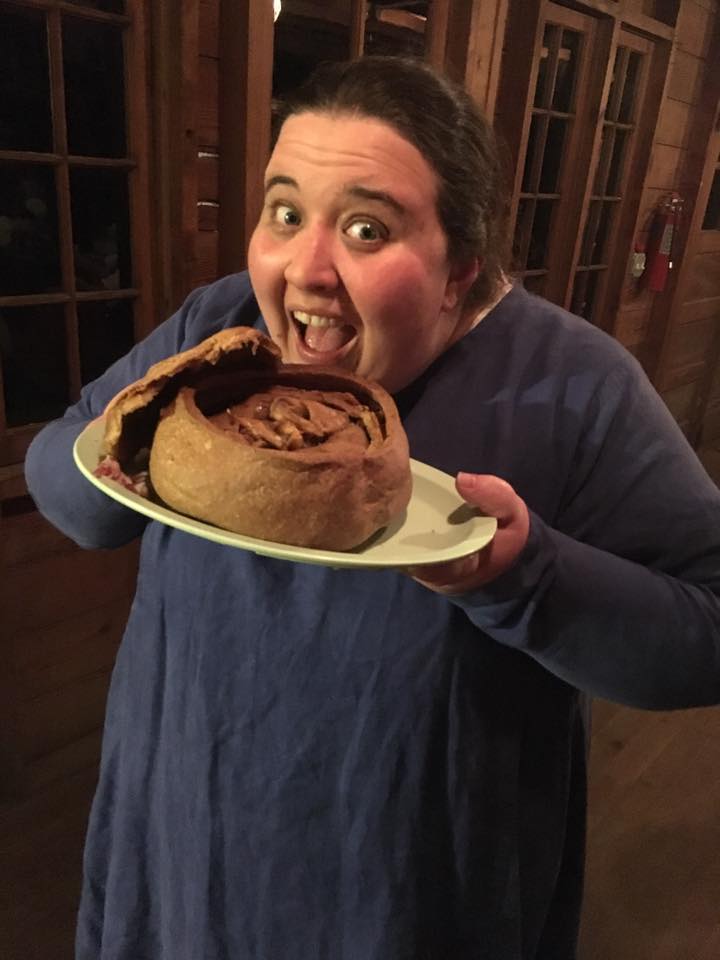In a world of mass-produced pastry trash, one woman would rise up and fight on behalf of all pie-kind. She alone would have the strength to wield THE PIE OF DESTINY!
At WCCS, I participated in a lamb “breaking” class — cutting a lamb into primals. It was incredibly interesting. I’ve broken a pig before, but not a sheep; the anatomy is basically the same, but I always want more practice. During the same class, we also slaughtered two roosters. The lamb had been slaughtered the night before. I helped pluck the roosters and watched the gutting process. It was all incredibly interesting!
I took one of the roosters and some of the lamb meat. Later in the day, I had a coffin from the class I taught, and I decided, of course, to fill that coffin with meat. But that wasn’t quite twee enough for me, so I gathered wild herbs and greens from the site. I ended up making a pie with meat from animals slaughtered on site and plants found on site and a crust made on site — it felt like the official unofficial symposium pie.

Directions for the pastry can be found in my pie crust class handout, linked in the previous post.
Here’s how I did the filling: First, I chopped some fatty lamb meat very small, and mixed it with salt and some very finely minced mint. Then I blanched a mix of nettles, redwood sorrel, fiddleheads, and lemon balm, chopped them finely, and mixed them with the lamb. I packed this into the bottom of the pastry. Then, I removed the breast meat from the rooster and put that on top of the seasoned lamb. Finally, I jointed the rooster and put its legs and wings above the rest of the meat and then put the coffin lid on top.
I baked this pie a looooonnnnng time — probably 4-5 hours, all told! — at 325°F. This meant that the meat got wonderfully tender, with the coffin acting just like a baking dish. To serve, I removed the top crust and let people dig in. The top crust was actually pretty tasty, even though I made the pastry thick. I would have been interested to taste the side/bottom crust, as a lot of fat and juice from the lamb had soaked into it; however, I was trying to keep things relatively tidy, and it seemed easier to just scoop out filling. I personally thought the lamb and rooster were delicious; I liked the flavor profile, and the meat was just so tender and flavorful. The rooster was what chicken wants to taste like.
I felt like this was a “bucket list” pie — making food from animals killed less than 24 hours before hand and plants I gathered. This pie made me really happy.




